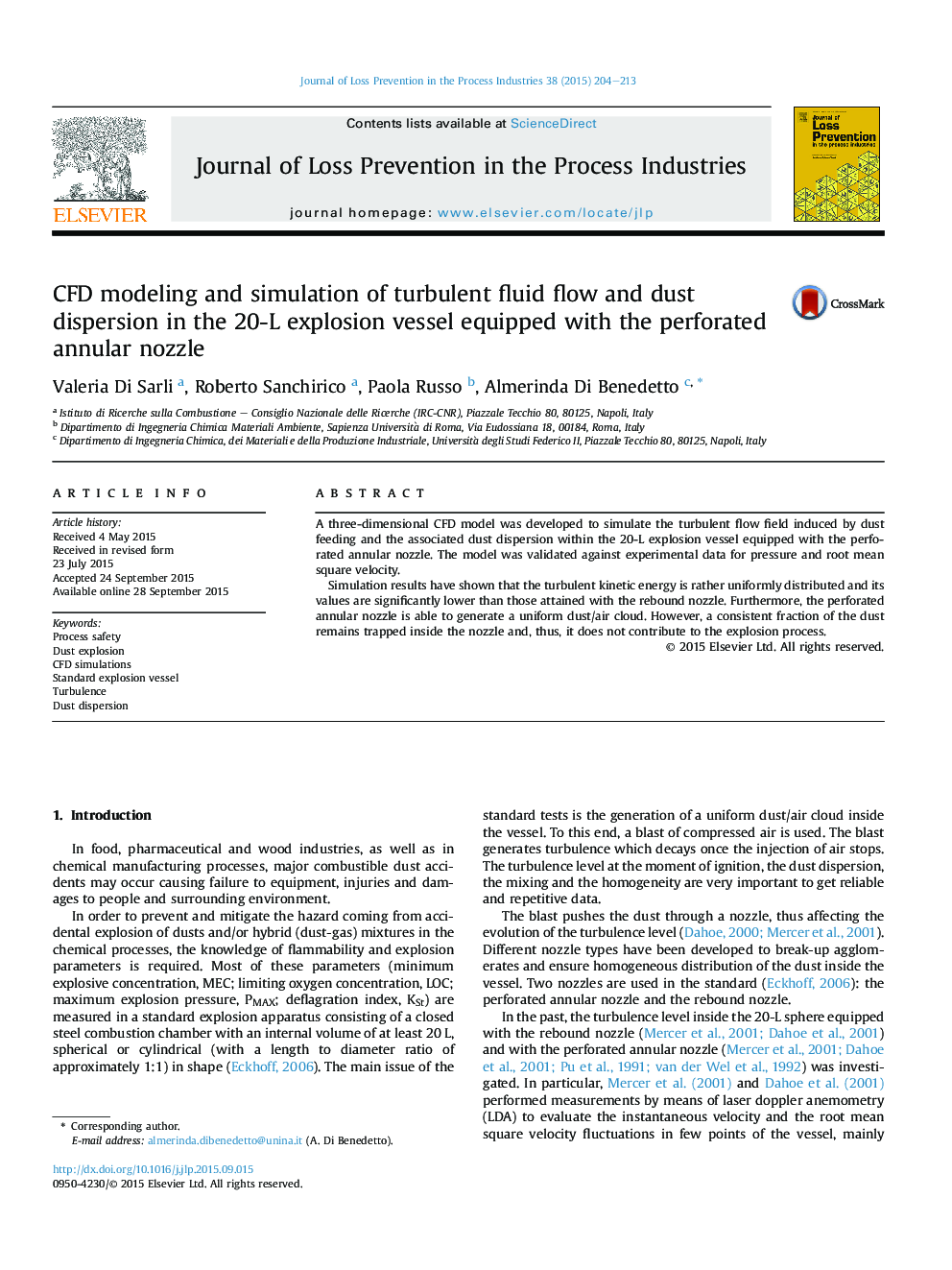| کد مقاله | کد نشریه | سال انتشار | مقاله انگلیسی | نسخه تمام متن |
|---|---|---|---|---|
| 585975 | 1453270 | 2015 | 10 صفحه PDF | دانلود رایگان |

• Dust dispersion tests in standard 20 L explosion vessel have been performed.
• Effect of nozzles has been studied: rebound vs. annular.
• Dispersion through the rebound nozzle generates higher turbulence.
• Dispersion through the rebound nozzle generates and worst dust mixing.
A three-dimensional CFD model was developed to simulate the turbulent flow field induced by dust feeding and the associated dust dispersion within the 20-L explosion vessel equipped with the perforated annular nozzle. The model was validated against experimental data for pressure and root mean square velocity.Simulation results have shown that the turbulent kinetic energy is rather uniformly distributed and its values are significantly lower than those attained with the rebound nozzle. Furthermore, the perforated annular nozzle is able to generate a uniform dust/air cloud. However, a consistent fraction of the dust remains trapped inside the nozzle and, thus, it does not contribute to the explosion process.
Figure optionsDownload as PowerPoint slide
Journal: Journal of Loss Prevention in the Process Industries - Volume 38, November 2015, Pages 204–213